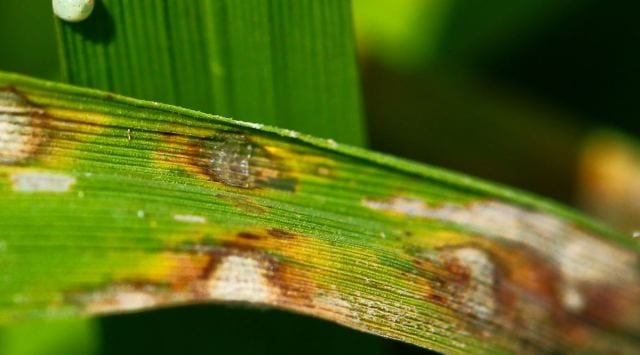- India
- International
Brace for new crop diseases steered by climate change, says study
The results suggest that India will see a substantial decrease in the impact of crop pathogens, but high temperatures could cause crops to fail.
 Rice Blast disease( International Rice Research Institute via Flickr)
Rice Blast disease( International Rice Research Institute via Flickr)A new study that looked at climate change models has predicted that with rising temperatures, the burden of crop diseases will increase in some parts of the world and fall in others. The team adds that new diseases are also likely to arrive due to increased international trade.
Countries in the Northern Hemisphere, particularly in Europe, China, and the central to the eastern United States, were found to be vulnerable, while much of Brazil, India, and Southeast Asia was predicted to see a decline in crop diseases. The findings were published in Nature Climate Change.
Delighted to share our new paper in @NatureClimate “Plant pathogen infection risk tracks global crop yields under climate change” with @thomaschaloner @GurrLabExeter from @UniofExeter #planthealth2021https://t.co/RPcWiAjI1i
— Dan Bebber (@DanBebber) August 6, 2021
“There are many plant pathogens which currently affect crops in India. Recently there have been outbreaks of rice blast in Nagaland, wilt on coconut in Kerala, and anthracnose on mango in Karnataka. But our results suggest that India will see a substantial decrease in the impact of crop pathogens because increasing temperatures will make it difficult for them. However, the increasing heat will also cause crops to fail,” explained lead author Daniel P Bebber from the Department of Biosciences, University of Exeter, UK, in an email to indianexpress.com.
Every crop pest and pathogen has its own requirements — certain environmental conditions — that dictate the geographical regions it occupies and the season of the year it prefers to attack crops. As climate changes, these ideal conditions shift. Researchers modelled these changes in pest and pathogen burdens. They studied 80 fungal and oomycete crop pathogens, and compared current (2011–2030 mean) and future (2061–2080 mean) yield projections using four global climate models.
Professor Sarah Gurr, a co-author of the study, said in a release that changing pathogen mix in each area could have a major impact. She explained that plant-breeding and agrochemical companies focus only on particular diseases. “In the UK, for example, wheat breeders focus on resistance to Septoria tritici blotch, yellow rust, and brown rust — but those threats could change,” she added.
“Agriculture has to plan and prepare for the future — and that future is almost here,” said first author Thomas Chaloner in a release. “We have only got a few decades, and crop breeding can take a long time, so we need to think about resistance to pathogens that haven’t arrived yet. A lot of pathogens — especially those currently found in tropical areas — are seriously under-researched. We need to invest in understanding these diseases, which could become increasingly prevalent in the key crop-growing areas of the world.”

“We are now working on a more detailed understanding of the biology of the pathogens in relation to climate, so we can build better predictive models of their likely impacts,” added Dr Daniel P Bebber.
More Tech
Apr 18: Latest News
- 01
- 02
- 03
- 04
- 05







































